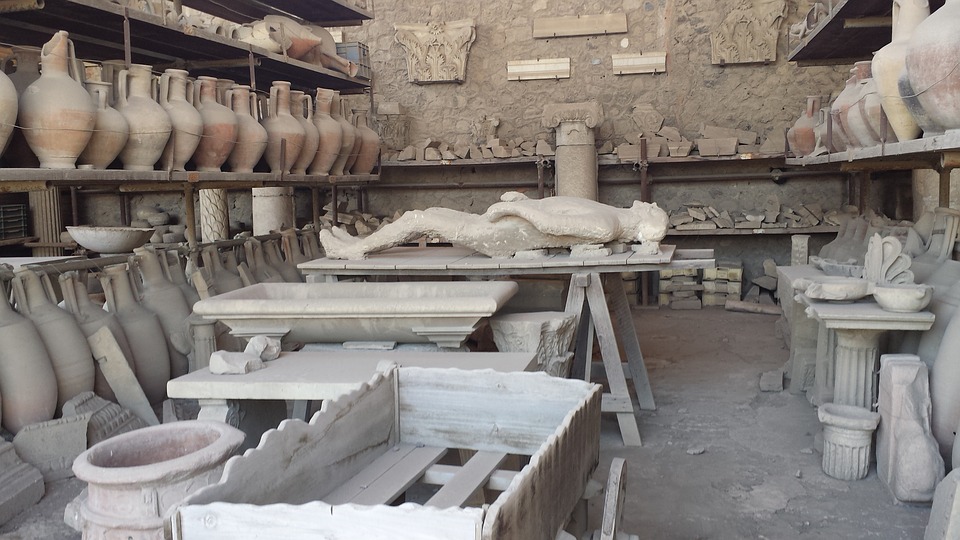Pompeii: How are casts of the dead created?
by Scott Dutfield · 26/06/2019

Discover how the victims of a volcanic eruption have been preserved
On 24 August 79 CE, Italy’s Mount Vesuvius erupted with a violent explosion of lava, rock and ash, sending a cloud of debris 32 kilometres into the air. The nearby town of Herculaneum was soon hit with a scolding pyroclastic surge of volcanic materials, instantly incinerating everyone in its path, while ash and pumice rained down on the neighbouring city of Pompeii. Some of the city’s residents managed to flee in terror, but others stayed in their homes hoping the danger would pass. The next morning, a second pyroclastic surge ploughed into the city, suffocating those that remained with toxic volcanic gas and burying them in mud and ash.
Pompeii was lost for the following 1,500 years before being rediscovered in 1599, and after another 150 years a wide-scale excavation of the city began. As archaeologists were digging through the volcanic debris, they noticed distinct cavities in the lava, some of which contained human bones. They soon realised that these were perfect moulds of the dead, left behind after their bodies had decomposed. At first they couldn’t work out how to preserve them, but following his appointment in 1863 the director of the excavations, Giuseppe Fiorelli, came up with an ingenious solution. He directed the archaeologists to pour plaster into the cavities so that it would set to form exact replicas of the victims at the moment of their death.
It was a difficult process, as the plaster had to be mixed to exactly the right consistency to ensure that it was thick enough to support the skeleton but not so thick that it destroyed the fine details of the mould. When they chipped away at the surrounding rock, the final casts were revealed, some featuring intricate details of the victims’ hairstyles, clothing and facial features.
Of the 1,150 bodies discovered at Pompeii, around 100 have been preserved in this way, providing a unique insight into the life and death of the city’s residents. Nowadays, modern techniques like 3D scanning have even enabled scientists to create digital images of what the victim’s actually looked like, truly bringing them back to life almost 2,000 years after they met their cruel fate.
Restoring the dead
Discover how archaeologists created lifelike casts of Vesuvius’ victims
This article was originally published in How It Works issue 102, written by Jo Stass
For more science and technology articles, pick up the latest copy of How It Works from all good retailers or from our website now. If you have a tablet or smartphone, you can also download the digital version onto your iOS or Android device. To make sure you never miss an issue of How It Works magazine, subscribe today!





